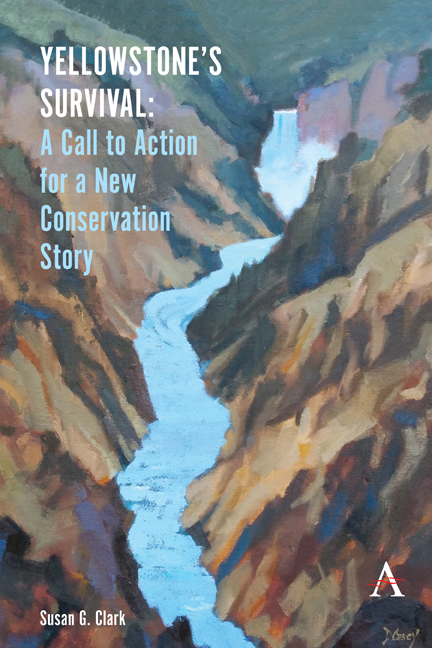 Yellowstone's Survival - A Call to Action for a New Conservation Story
Yellowstone's Survival - A Call to Action for a New Conservation Story 1 - Stories of People, Nature, Yellowstone
Published online by Cambridge University Press: 22 May 2021
Summary
Yellowstone is loved and overrun because it offers a glimpse of what life used to be like, or what we miss and want from it.
The Yellowstone we know and love is endangered. Many of us have a sense of the vast challenges facing the region given the environmental and social changes underway. We see the growing litany of threats in newspapers and on social media. Suburban development, road and trail expansion, front and back country recreation, record-breaking visitation, traffic and wildlife jams, disruption of ecological processes, fragmentation of wildlife habitat, changes in migration patterns, threatened species, invasive species, oil and gas development, loss of wildness, and wildlife disease are all salient challenges. With multiple geographic and political divisions in the region, integrated management across artificial boundaries to address problems is itself problematic, as is the lack of farsighted, coordinated, overarching leadership. Though these interconnected problems are diverse in nature and impact, they all derive from the same underlying source: us.
For people who live in the Greater Yellowstone Ecosystem (GYE) today, the rapid rate of change is cause for considerable concern. Many people are worried that we are losing the habitats and species that have defined our stories about pristine wildness in Yellowstone. Superintendent Dan Wenk said, “This is an extraordinary region [that] isn't like [everywhere else] nor should we accept that its slow, steady disintegration is [in] evitable.”
When asked about the most ominous threats facing Yellowstone today, Dennis Glick of Future West in Bozeman, Montana, said, “Number one would be the effects of climate changes: droughts, big wildfires, and diseases that were never here before […] [and today] humankind may very well be loving this place to death.” While for many people, the threats of climate change seem to loom far in the future, it is already easy to see the miles of dead and dying trees from the main roads, and the effects are only going to become more dramatic. For example, the next few decades of change will very likely cause more fires, less forest, larger grasslands, smaller and hotter waterways, increased invasive plants, and fewer big animals. Many native species may not be able to adapt to this rapid change.
The GYE is experiencing dramatic change to be sure, and consequently its historic and cultural meaning is changing, too.
- Type
- Chapter
- Information
- Yellowstone's Survival - A Call to Action for a New Conservation StoryA Call to Action for a New Conservation Story, pp. 1 - 22Publisher: Anthem PressPrint publication year: 2021
